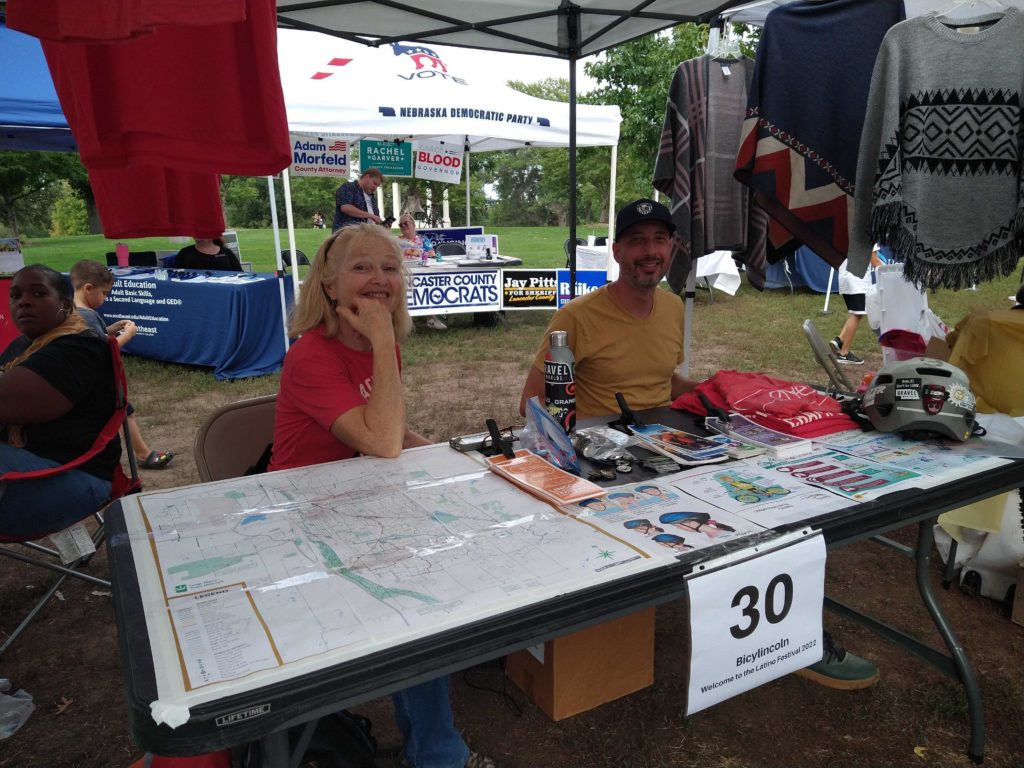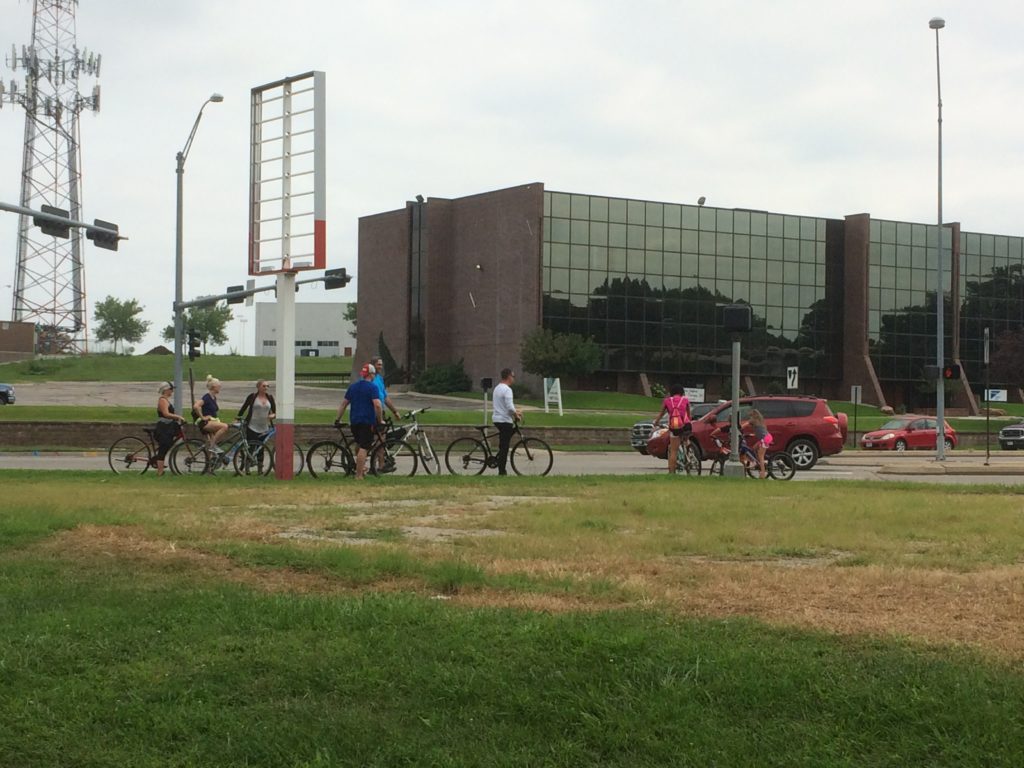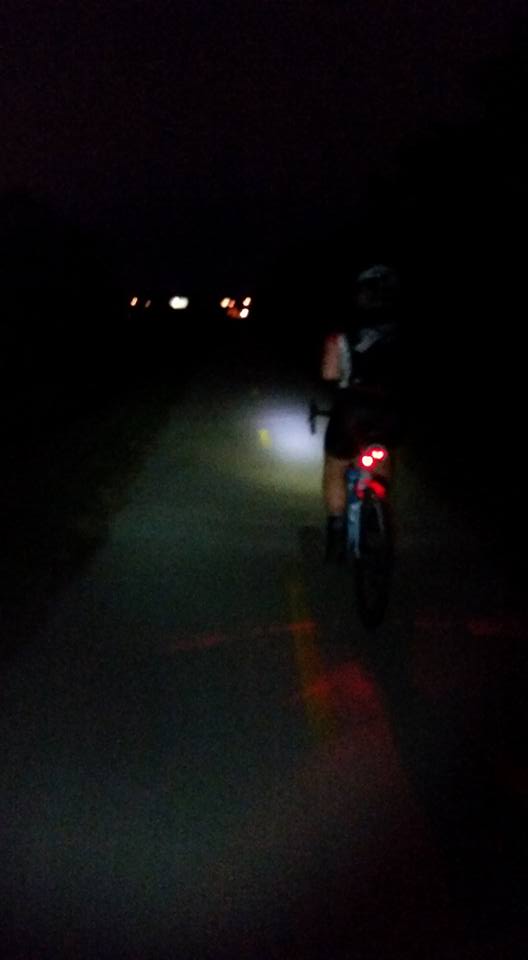Last Saturday bicyclincoln had a table at the Latino Festival and a lot of people spun the bike wheel to answer a question and pick a prize. It occurred to me that a lot of riders could use a refresher of basic bicycle facts and tips. Here are a few borrowed from a safety class we offered with bikeLNK a few years ago. Test yourself to see if you’re right.

In Lincoln, about half of all cyclists ride on the street, and half on the sidewalk. What percent of all collisions between cars and and bicycles happen to those riding on the street? is it A) 20% B) 50% C) 80%. Answer- 20%. Explanation: Motorists are looking at the street, not the sidewalk. They don’t see the bicycle on the sidewalk until it’s too late, at an intersection or driveway. It’s actually 4 times more dangerous to ride on the sidewalk than on the street. We don’t recommend street riding for kids younger than 8, and we recommend quiet side streets, not “O” or 27th, for example.

Here’s another one. There are tens of thousands of bicycle trips each year through downtown Lincoln. How many collisions are there between cars and bicyclists riding ON THE STREET in a year? A) 4/year B) 34/year C) 54/year. Answer- Only 4/year. Explanation: People believe it’s quite dangerous to ride downtown on the street, but motorists are driving slowly downtown, and will see a bicyclist in the street. For cyclists riding ON THE SIDEWALK downtown, the number of collisions is 20 per year!
And now how about this one? What percent of collisions between cars and bicycles happen with the car running into the back of the bicycle? A) 5% B) 30% C) 60%. Answer- 5%. Most of these are at night, and the bicycle doesn’t have a rear light or reflector. The motorist just does not see them. Most collisions happen from the side, at intersections and driveways, or head-on, when the cyclist is riding the wrong way. Nebraska law states that “(1) When in use at nighttime, a bicycle shall be equipped with a light visible from a distance of at least five hundred feet to the front on a clear night and with a red reflector on the rear of a type which is approved by the Department of Motor Vehicles or a local authority and which is visible on a clear night from all distances between one hundred feet and six hundred feet to the rear when directly in front of lawful lower beams of headlights on a motor vehicle. A red light visible from a distance of five hundred feet to the rear may be used in addition to such red reflector”. Also, don’t forget your tires must have reflective material on the side walls, or a reflector mounted on the spokes of each wheel.

Finally, how far from the curb should you ride? 2 feet away, or 4-5 feet away? Answer- 4-5 feet. Why? If you ride only 2 feet from the curb, you are giving motorists the message that it’s ok to squeeze by you, without giving you enough room to be safe. If you ride 4-5 feet out, the motorist will see you sooner, from 2 blocks away, and will recognize that he must move left to pass safely. Nebraska law permits you to take the lane when it’s too narrow to share.
Other reasons for not riding too close to the curb are that cars may be parked, and weaving in and out from the curb to go around a parked car makes it harder to see, and be seen, not to mention one of those parked cars may open a door in front of you. Also, there may be debris closer to the curb, or a storm water grate. Always look ahead for dangers.
Obviously, I’ve only scratched the surface here. The city has a section devoted to cycling on their website and there is some good material and videos there if you poke around.
All of this however reinforces the mindset that streets are the domain of cars, and that our safety is in our own hands every time we venture out. But what if this were not the case? This video is a fascinating look at another way of viewing pedestrian and bicyclist safety through designing our infrastructure with that in mind.
